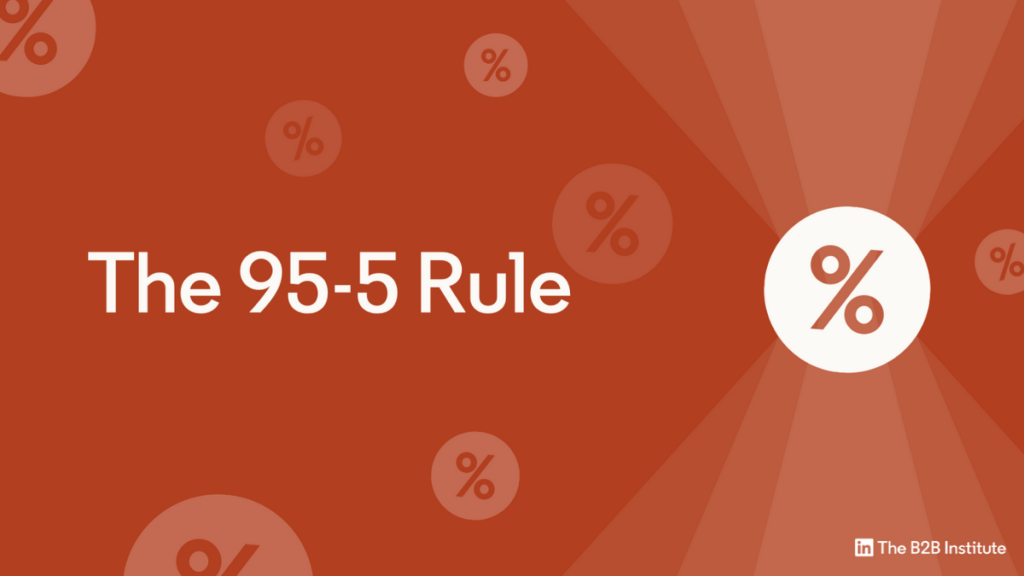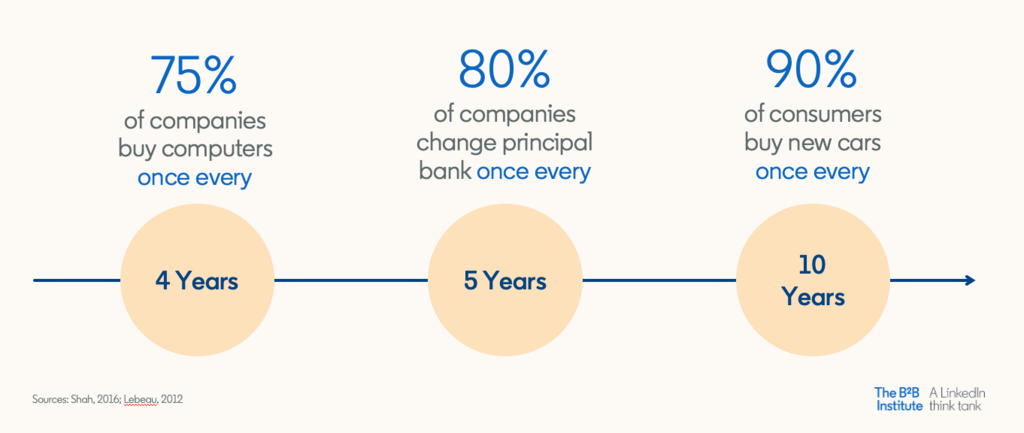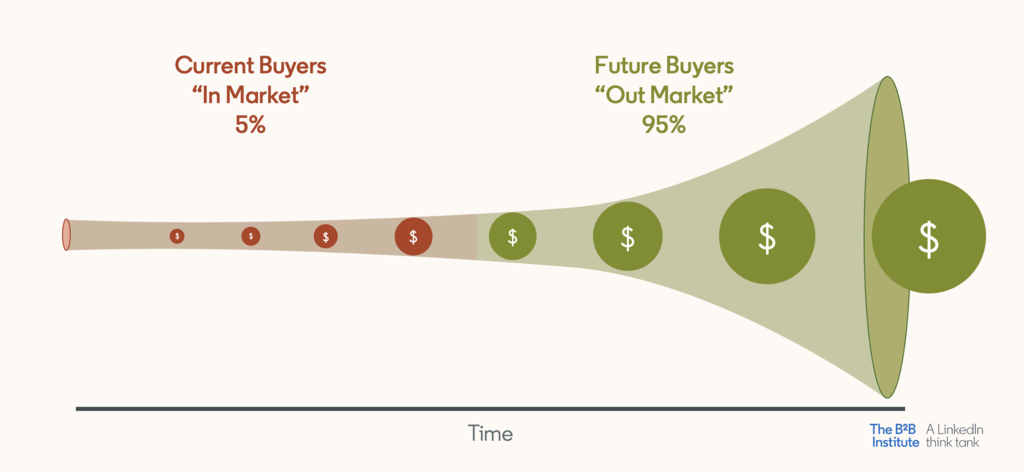Why You Should Follow The 95-5 Rule

What is the 95-5 Rule?
There is a story about two ad executives who get into a car. The first ad executive says, “I saw an ad for Aston Martin and bought this car.” The Second exec says, “but Aston Martin hasn’t advertised for years. How is that possible?”
It was possible because the first ad exec had seen the ad when she was 13 years old, and she’d never forgotten it.
The best ads drive sales over the longest periods of time by building memories that still have the power to influence our buying decisions years later. The Aston Martin ad clearly made a long-lasting impression that contributed to a sale much later than anybody would have guessed.
Understanding the long-lasting impression brand advertising makes is especially important given our research on The 95-5 rule, which shows that 95% of your potential buyers aren’t ready to buy today. This 95% are “out-market” today but will be “in-market” sometime in the future.
This isn’t just a theory; we actually see this in our joint How B2B Brands Grow research with the Ehrenberg-Bass Institute: 75% of companies buy computers once every 4 years, 80% of companies change banking services once every 5 years, and even in B2C, 90% of consumers buy new cars every 10 years. So most of the time, most category buyers are not “in-market.”

Ads Don’t Immediately Prompt Purchases
Despite the evidence indicating most buyers are “out-market” at any given time, most marketers believe that advertising works right away. We saw this in a study we did with B2B marketers on LinkedIn: 96% of B2B marketers expected to see the main effect of their ad campaigns within 2 weeks.
This belief is a myth.
Think about it! Has your business recently made a significant purchase, like a new phone system, engaged with a new payroll software vendor, signed a contract with an IT support company, or perhaps even bought new carpet for the office?
If you have, then you’ll know that you’re not in the market for those items now and, if you haven’t, then you’ll know you likely don’t need those items right now. The time between purchases for many B2B goods and services is quite long.
The problem with this marketing myth is that it leads marketers to believe the job of advertising is to move people “in-market.” But ads don’t move buyers “in-market.” Only buyers will move themselves “in-market” – when they need a new good or service.
The myth that ads work by moving buyers “in-market” is most commonly expressed through the sales funnel. But ads don’t work by moving people down the funnel. In fact, ads work by reaching buyers who aren’t even in the funnel yet.
Why?
Because more often than not, the brand that is most easily remembered is the brand that gets bought. Your job as a marketer is to start linking your brand to relevant buying situations – also known as category entry points – well before buyers enter the market, so when buyers do enter the market, your brand is the one that comes to mind. And if they don’t know your brand when they enter the market, then it’s already too late.
This is why the 95-5 Rule advises you advertise mostly to buyers who are not likely to buy from you today.
We recommend flipping the funnel on its side and re-thinking your marketing through the “in-market/out-market” paradigm expressed in The 95-5 Rule.

Flip the Funnel with the 95-5 Rule
“In-market/out-market” is not only far more customer-centric – nobody says “I’m at the bottom of the funnel” – but it is also far more finance-centric. This framing maps directly to how your CFO thinks about sales: in terms of current and future cash flows. It may seem outlandish to make the case to invest heavily in brand advertising that reaches people who are very unlikely to buy in the short term. But by flipping the funnel on its side, it becomes clear why it makes sense to reach the 95% of the category that won’t buy today: because those “out-market” buyers represent the future cash flows that underpin the stock price for every public company.
So follow the 95-5 Rule to grow: Invest in lead-generation efforts targeting the 5% of people who are “in-market” today, but don’t forget to invest far more heavily in reaching the entire category with brand advertising that resonates with future buyers, and thus generates future cash flows.
